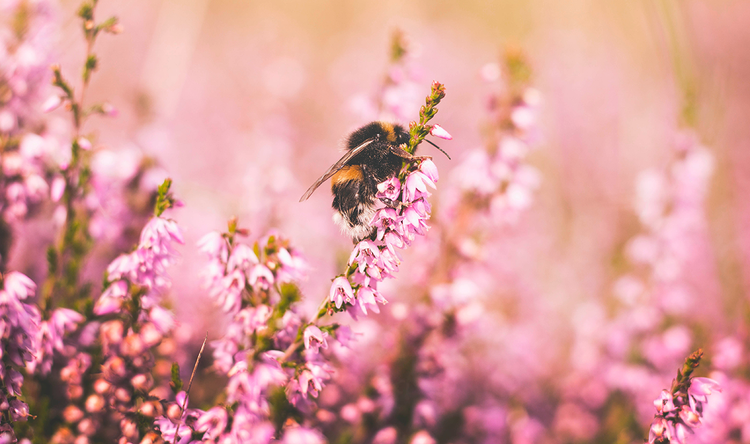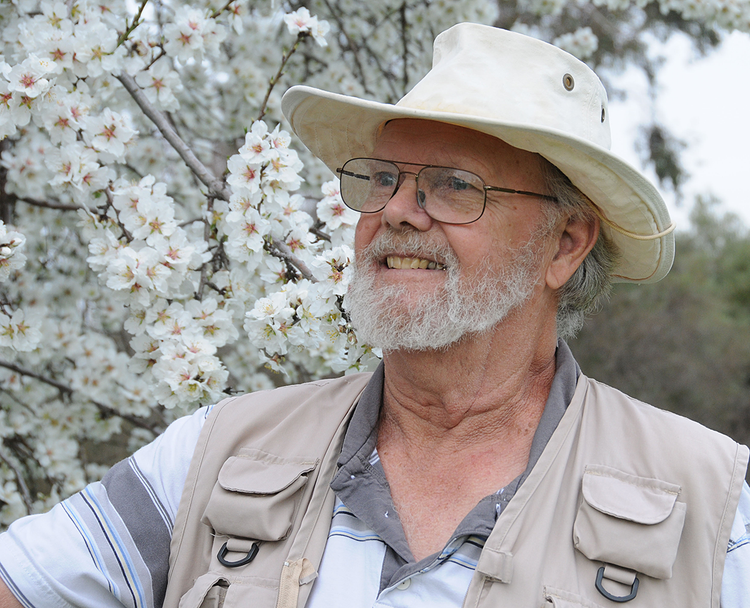A Bumble Bee Expert on How Humans Can Save the Bees

It’s the little things that count—this statement is as true in nature as in anything else. Though you may not realize it or think about them on a day-to-day basis, insects are a very large part of the reason certain foods, flowers and plants grow. In fact, something as small as a bumble bee is the reason you have tomatoes in your salad, or peppers in your salsa.
These same bumble bees, however, are in danger and need our help. We asked U.C. Davis professor emeritus in the Department of Entomology and Nematology Robbin Thorp, Ph.D., who has been studying bumble bees for more than six decades, what humans are doing to facilitate the declining bumble bee population in North America, and what we can do to help.

24Life: How long have you been studying bumble bees, and what got you interested in studying them?
Robbin Thorp: My interest in bumble bees began about 1955, more than 60 years ago, after taking an introductory class on insects and becoming fascinated with bees and the story of pollination in general.
24Life: Why are bumble bees important?
RT: Bumble bees are important to the environment and many of the crops we grow because they are effective pollinators of many flowering plants. A few species of bumble bees are currently managed for crop pollination, especially for greenhouse tomato production in many parts of the world.
24Life: What is something surprising about bumble bees that many people may not know?
RT: What most people know about bees comes from their knowledge of the introduced honey bee, but bumble bees are quite different. Bumble bees have a colony with a queen, workers (usually no more than a few hundred at maximum), and males. But unlike the honey bee colony, a bumble bee colony usually lasts for only a year. At the end of the colony season, males and new future queens are produced. They mate and the future queens hibernate over winter, while the rest of the colony members die. Thus, bumble bees have no need to concentrate the nectar they collect into honey, and any liquid stores remain rather dilute and are pretty well used up during the active season of the colony. Bumble bees do not lose their stingers when defending their colonies like honey bees do. Thus, they can sting repeatedly.
24Life: You are credited with starting a movement to save the bumble bees—when did you realize their numbers were declining?
RT: I began a monitoring project in 1998 of a bumble bee that only occurs in southern Oregon and Northern California, to determine whether or not it should be listed as an endangered species. It had been identified as a candidate species when the Endangered Species Act was enacted in 1973, but was not listed due to a lack of information. During my monitoring, its numbers began to drop drastically by the year 2000, along with numbers of closely related species, like the Western Bumble Bee in the same area, while other bumble bees continued to do quite well.
24Life: How are humans contributing to the extinction of bumble bees?
RT: There are many things we do that are detrimental to bumble bees and other pollinating insects, including alteration and destruction of their habitats through agricultural and urban expansion; pollution; pesticides; introduction and spread of their natural enemies (parasites, predators, pathogens).
24Life: What can humans do to help bring the number of bumble bees back up?
RT: We can help bring numbers of bumble bees back up by mitigating our detrimental actions, including providing bee-friendly habitats (including adding more flowering plants and places to nest); being aware of and reducing the risks of movements of their natural enemies; and eliminating use of pesticides.
24Life: Any tips for becoming an at-home beekeeper?
RT: For those interested in becoming a backyard beekeeper, I suggest they first need to learn what beekeeping is all about and how to do it effectively. Start by joining a local bee club and/or seeking out an experienced local beekeeper willing to provide you with some hands-on experience. Also find out what the local ordinances regarding beekeeping are.
Other beekeeping tips
Interested in raising bumble bees and contributing to putting their numbers on the rise? Here are some tips from Dr. James Strange, PhD, and the USDA.
- Have the correct supplies. These include a nest box, pollen, sugar syrup, and a warm dark place to keep the bees.
- Catch a few queens. Queens are usually caught on a plant collecting nectar. Do not take queens with pollen on their hind legs, an indication that they already have a nest and will not create a new nest if captured.
- Place queens together to grow the nest. Or, you can place a queen with honey bee workers to encourage egg production.
- Regularly maintain the nest with minimal disturbance. Strange recommends waiting three days to refill the queens’ food supply, and then to check in every other day.
- If there are no workers, let the queen go. If the nest is growing, transfer it to a bigger box.
- Keep the nest clean. To keep your bees from catching a disease or other issues that come from a messy nest, clean up after your bees when the nest dies off in the fall.
Photo credit: Josephine Amalie Paysen, Unsplash; courtesy of Robbin Thorp